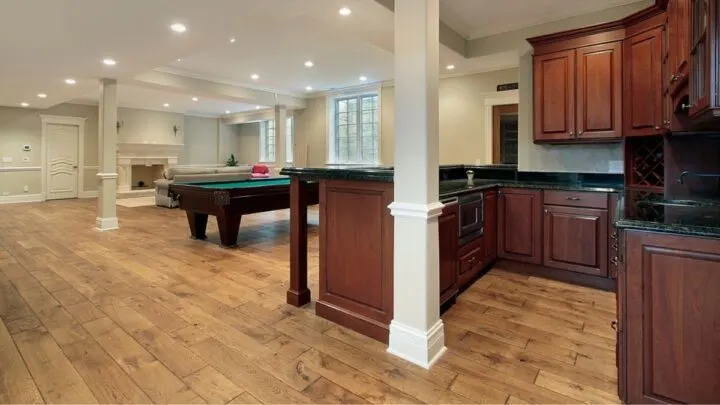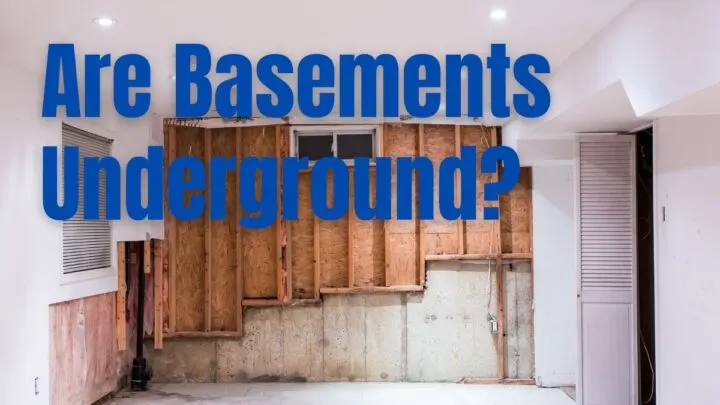Many people characterize basements as a tranquil and comfortable environment that provides them with peace and escapism. Or they think of it as an extra place for storage and where their laundry might be located.
We define a basement as a space with one or more floors beneath the building’s ground floor.
Basements can be partially or completely underground, depending on where the home is located and the condition of the soil. The term “basement” itself refers to a buried part of the house.
Basements come in different patterns and measurements, and also as a result, the primary usages for a cellar vary based on the type of cellar that the residence has.
In this article, we’ve compiled all of your questions and assembled the best responses to some of the most popular queries about these historically rich parts of homes.
What Are The Different Types Of Basements?
Basements come in a variety of dimensions, and you can build your basement according to your requirements.
We are going to take a look at the different types of basements that serve different purposes.
Walkout Basement
The walkout basements are crafted uniquely. A walkout basement is a cellar in which at least one ceiling is completely above ground.
The house must be built on a steep hill for the basement to be beneficial. These basements are regarded as very special, and many individuals want to own them.
Some upsides of walkout basements include easy accessibility and more natural sunlight.
Crawl Space
Crawl spaces are similar to basements, but they are vented to the outer wind.
It is a minimal area beneath the floor of a house that is predominantly capable of preserving the residence of the land to limit moisture levels.
Its key responsibility is to provide entry to electrical wiring, but some are big enough to provide some storage space.
Sub Basement
A sub-basement in the basement beneath your main basement. I know that sounds confusing, but bear with me as I explain.
This formation is built underground and lacks any windows or outer doors. A stairway is the main thing that links the sub-basement to the majority of the residence.
Sub-basements require us to drill deeper into the soil also, so they are a bit more uncommon.
Sub-basements are quite risky, as they are prone to flooding. Many people avoid making them unless they are designed in a good way.
Cellar
A cellar is an entirely subterranean space. It is not designed to house people, but you can decorate it to store champagne or other dry foods.
Many nations construct cellars to protect themselves from tornadoes. You can get to them from the inside or the outside of your house.
A cellar would have a closable entrance at the top of the staircase and would be utilized mainly for a tornado shelter.

What Are The Uses Of a Basement?
Many homeowners are interested in basements these days because they add value to their homes.
One can design their space with a theme or primary colors that they find appealing.
We’ll look at how to use this space effectively in this section.
Casual Living Room
Many property owners use the main living room as a much more appropriate area for visitors of all ages, but who doesn’t fantasize about having a living space where you can relax without worrying?
The basement can be a great place to unwind while watching TV or working, as well as a meeting place for a small group of friends.
Game Area
Computer games are entertaining, but why not set aside a room for table tennis, pool, and kickball, to keep youngsters entertained?
For card games, an additional sitting place can be added for extra fun.
Wine Cellar
Your basement can be a perfect place to showcase your wine collection.
It does not matter if they take up the whole space or you dedicate a small space to them to make sure the space is well decorated and beautiful.
Library
We all know that the world is becoming more interested in e-books, but many value physical, paper books as well.
What could be better than reading a book in a quiet place such as the basement?
Home Workout Area
We all skip our workouts because we have to go the extra mile to get to the gym, but here is a solution.
How about converting your basement into a gym room so you can stay fit with minimal effort?
Are Basements Always Below Grade?
Many people are concerned about whether or not the basement is considered below grade, which is just another phrase for below ground.
It does not matter how high the ceiling is from the ground level, but if the floor is below ground level it is below grade.
Basements are considered below grade stories according to this definition because the floor of the basement lies underground.
Conclusion to Basements Being Underground
Basements are one-of-a-kind spaces that offer a lot of extra space.
They come in a variety of shapes and sizes and can be used for a variety of purposes.
You can decorate your basement with a theme or a layout. Make your basement a beautiful and cozy space that can serve as a haven.
Basements are not always completely underground, but can be. Many are simply partially below grade.


